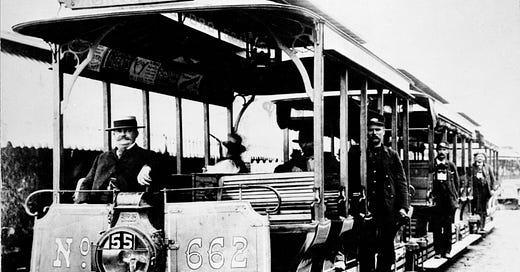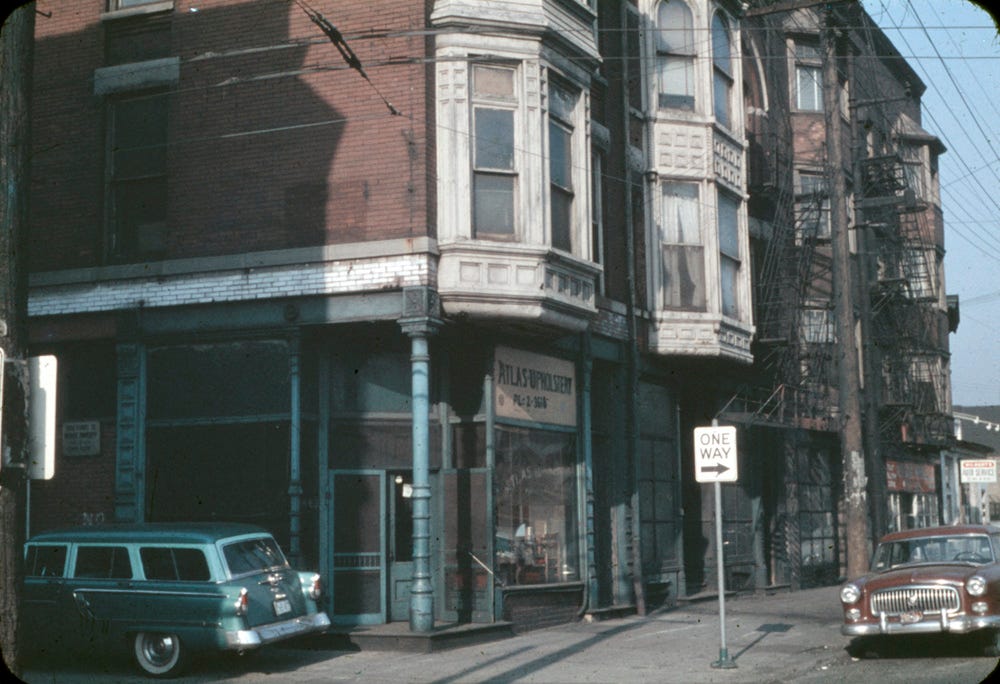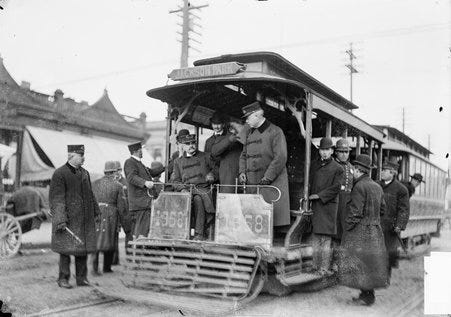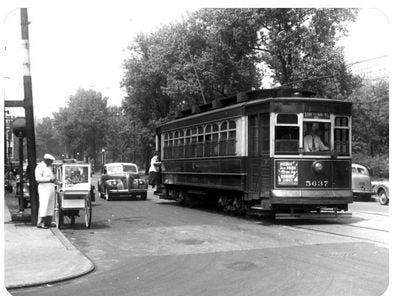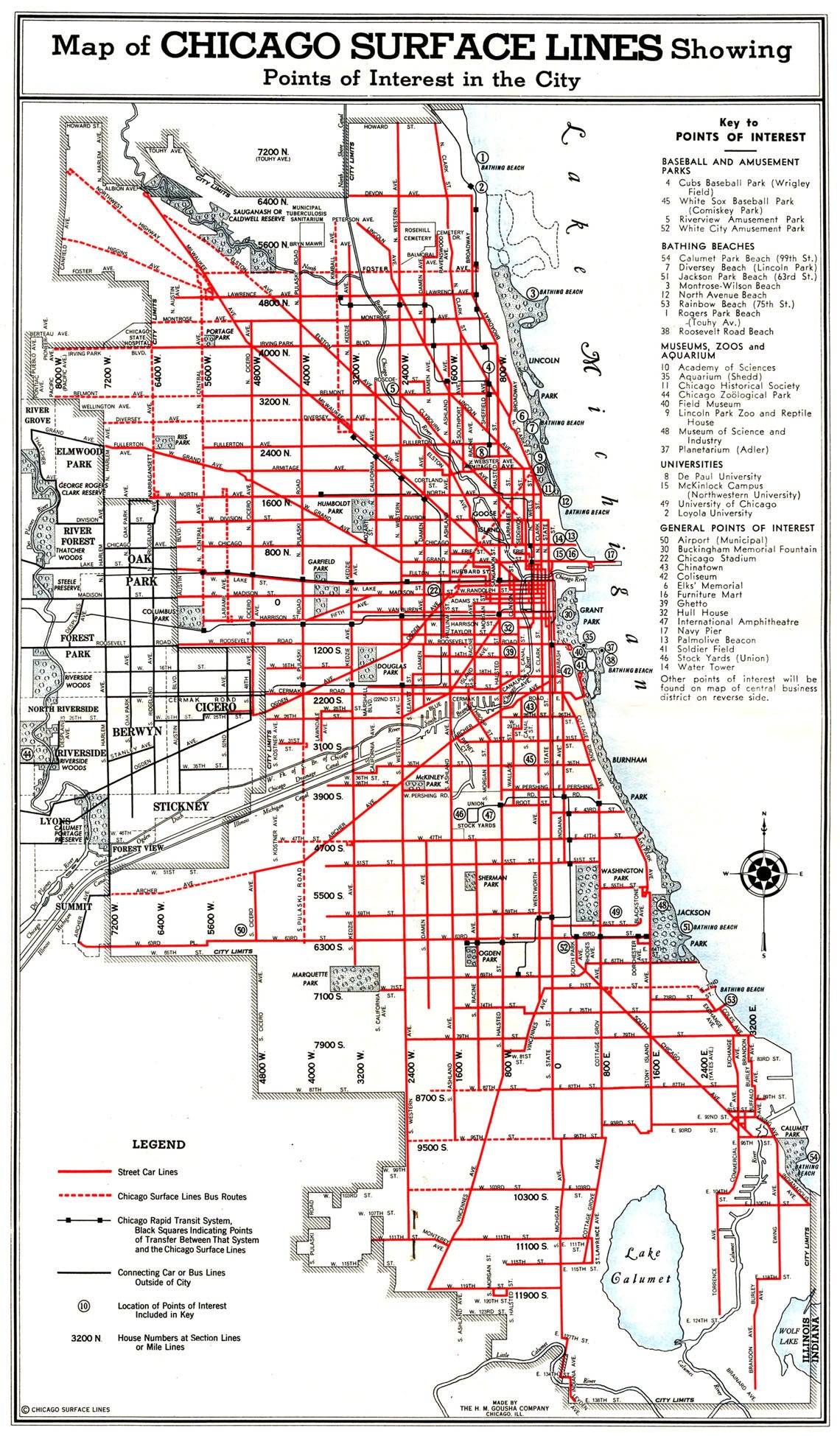My latest stories in the Hyde Park Herald just appeared. It’s a two-part story of streetcars in Hyde Park and how they shaped the neighborhood.
Part I: Horse cars to cable cars

and
Part II: Getting to the World’s Fair to the last gasp of trolley buses in the 1950s
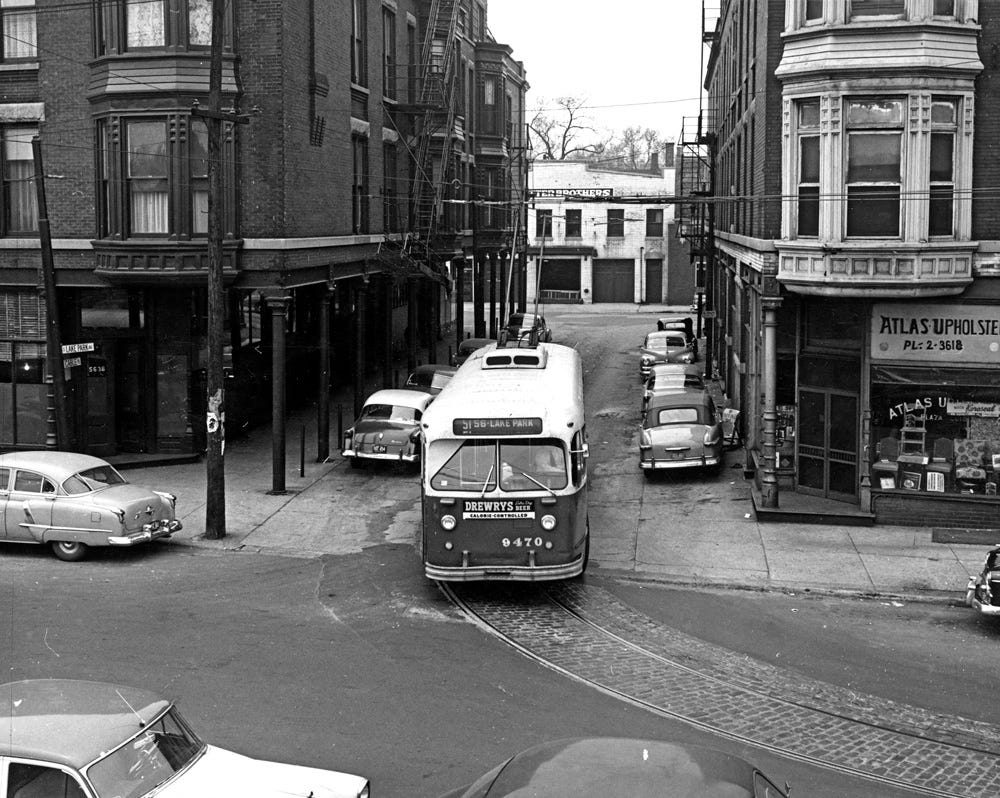
Another of Mildred Mead’s photos shows how rundown the buildings were in the 1950s, but also how many businesses and apartments they held. There was no thought at the time that preservation and/or restoration was a good idea. They also wanted to cut the population of Hyde Park in half so they were knocking down all of these multiuse buildings.
The area was leveled, Cable Court was eliminated, and it all was replaced with single family townhouses. Very clean, very modern, but with no room for indigent artists, eccentrics, or small businesses.
As usual there are stories I couldn’t include a lot of detail on. I snuck a mention of the 1903 strike of cable workers into the article. Here are the police riding the cars to deal with the strikers who were blocking the tracks with wagons and throwing bricks at the cars and strike breakers. A number of the workers were living along 55th Street, when Hyde Park had a working class area.
I could have had a whole police theme. There was a heist of Ancient Egyptian gold from the Field Columbian Museum (where the Museum of Science and Industry is now). They dashed west on 57th and jumped on the cable cars. When the police realized what had happened, they rode horses chasing the streetcars and stopping them. They caught up with 15 of them before they admitted the thieves had gotten away. One of them had been recognized so they caught the gang later.
And then there were the notorious Car Barn Bandits, a gang of four teenagers with the new rare automatic pistols. They’d already robbed and murdered when one night they entered the car barn on 61st Street, murdered two workers, grabbed the day’s haul of fares, and made their getaway on the electric trolley car headed east. At 61st and Blackstone they disappeared into Jackson Park, apparently through the pedestrian underpass at 62nd Street. They were later rounded up after having full page spreads in the papers about the manhunt.
Another incident I couldn’t squeeze in happened west of Hyde Park, when a stunt performed at the Sans Souci amusement park went awry. The act was a hot air balloon ascension from which a man leapt with a parachute. One day the strong winds off the lake blew him away from the amusement park and onto the roof of an electric trolley. He got burnt on the wires, but he bragged that he was fine. Just another exciting day at the amusement park.
Here’s the electric trolley that ran on Stony Island with a vendor at 57th Street near the row of concession stands leftover from the 1893 fair that housed music stores and bait shops and studios. It was posted on a website and I couldn’t find the person to give me permission to print it. I figure I can put it here because I can always delete it if someone finds it and hollers.
I am very sorry that the streetcar system was abandoned. It really covered the whole city. This is a map of the surface lines in 1937. Though the central plants were sources of pollution then, the exhaust wasn’t distributed all over the city and switching a central plant to a safer form of energy would have been far far easier. Climate change aside, the air quality of Chicago is rated F by the American Lung Association, thanks to the combustion engine. And, just as I found out in researching why the tracks went where they did, a lot of the design was getting people to places where they could have fun.
And, for those of you near Hyde Park itself, a reminder that the Mum and Bulb Fair is coming soon! This year we’ll have a table of Native Plants. So come on by and say hi!

